Abstract
Three students with moderate mental retardation were taught a complex stimulus class with a two-choice conditional discrimination procedure applied across eight 10-member stimulus sets. Each set was composed of five age-appropriate and five age-inappropriate examples of clothing, accessories, and leisure items (e.g., a Walkman radio). Discrimination training was programmed serially across each set, and generalization probes were conducted concurrently among all sets. Generalization probes consisted of unreinforced conditional matching trials with comparison items being drawn from (a) the set undergoing training (within-set probes), (b) sets not undergoing training (between-set probes), and (c) both sample and comparison items from different sets (transitive stimulus control probes). Results indicate that within-set generalization, between-set generalization, and transitive stimulus relations controlled responding by all 3 students for items that had been contingently associated with reinforcement. However, items that gained control of responding through within-set and between-set generalization alone (i.e., not acquired through contingent reinforcement) remained at baseline levels during transitive stimulus control probes. Results are discussed in terms of a taxonomy of multiple sources of stimulus control that underlie socially defined and maintained stimulus classes.
Full text
PDF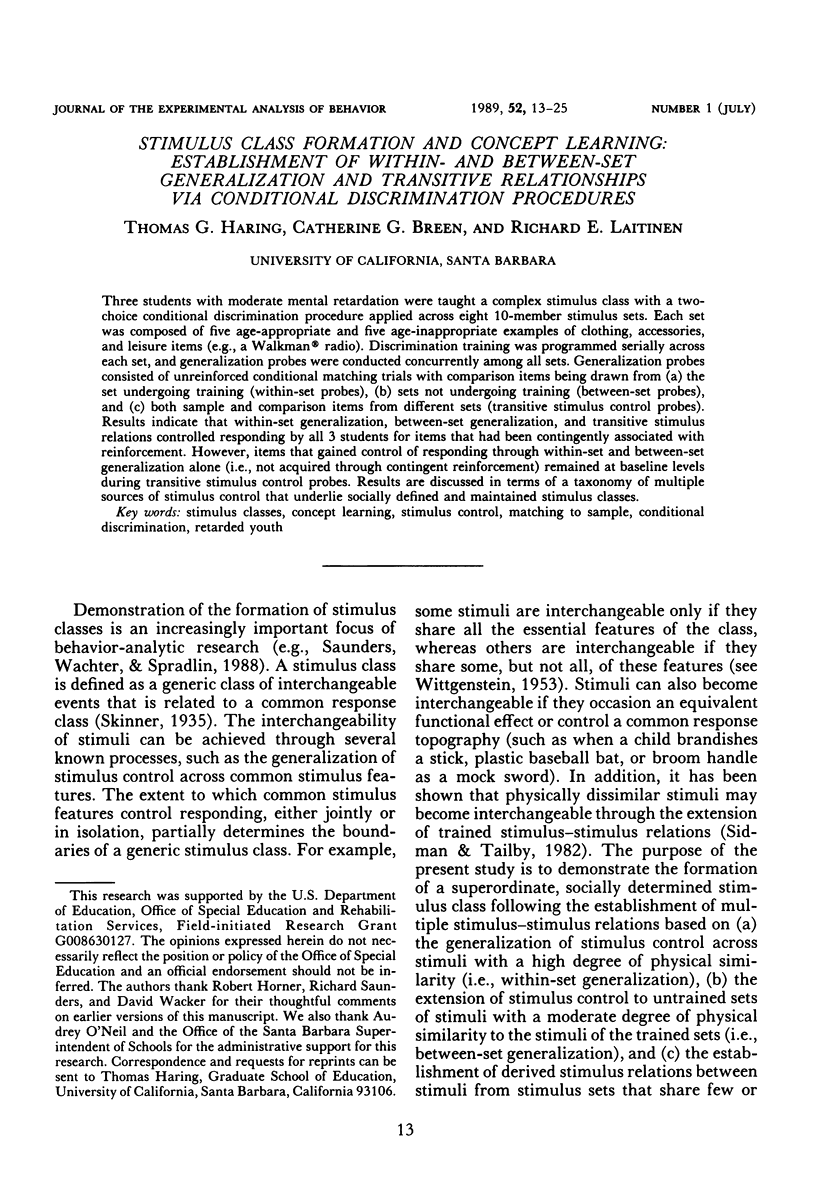
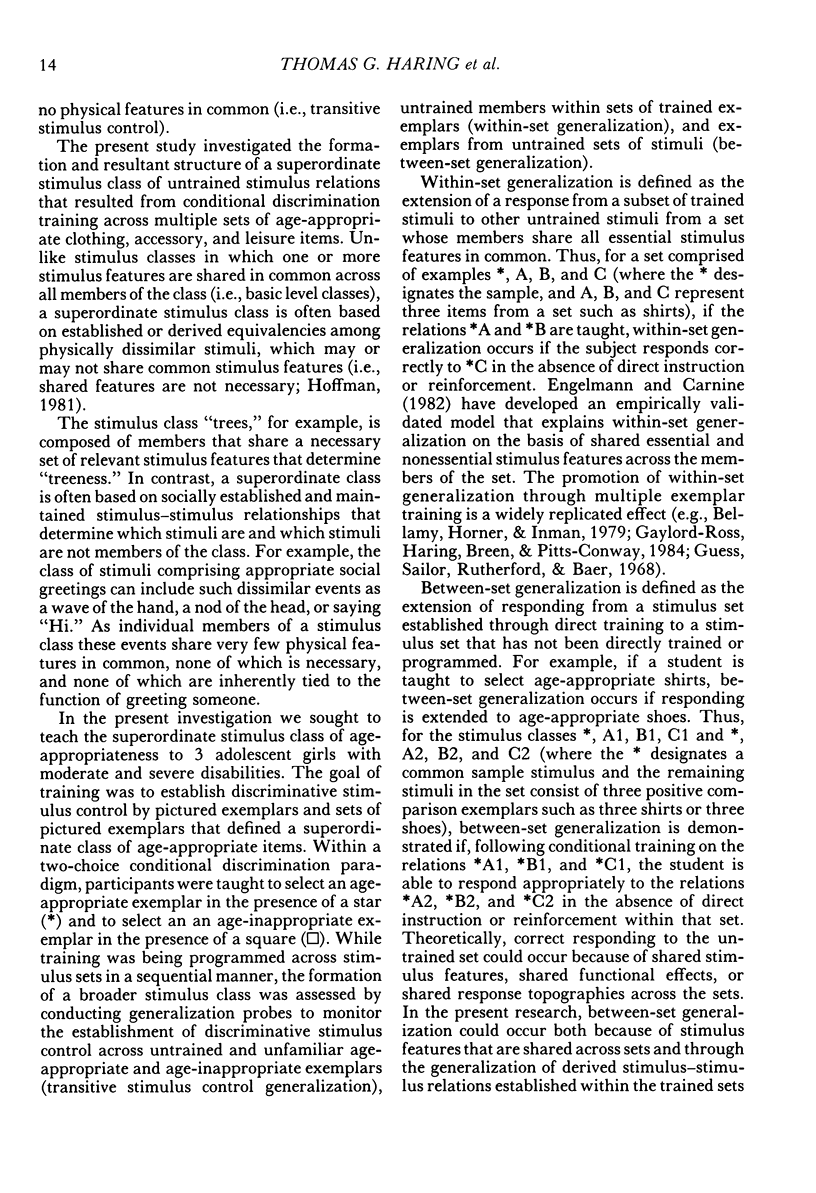
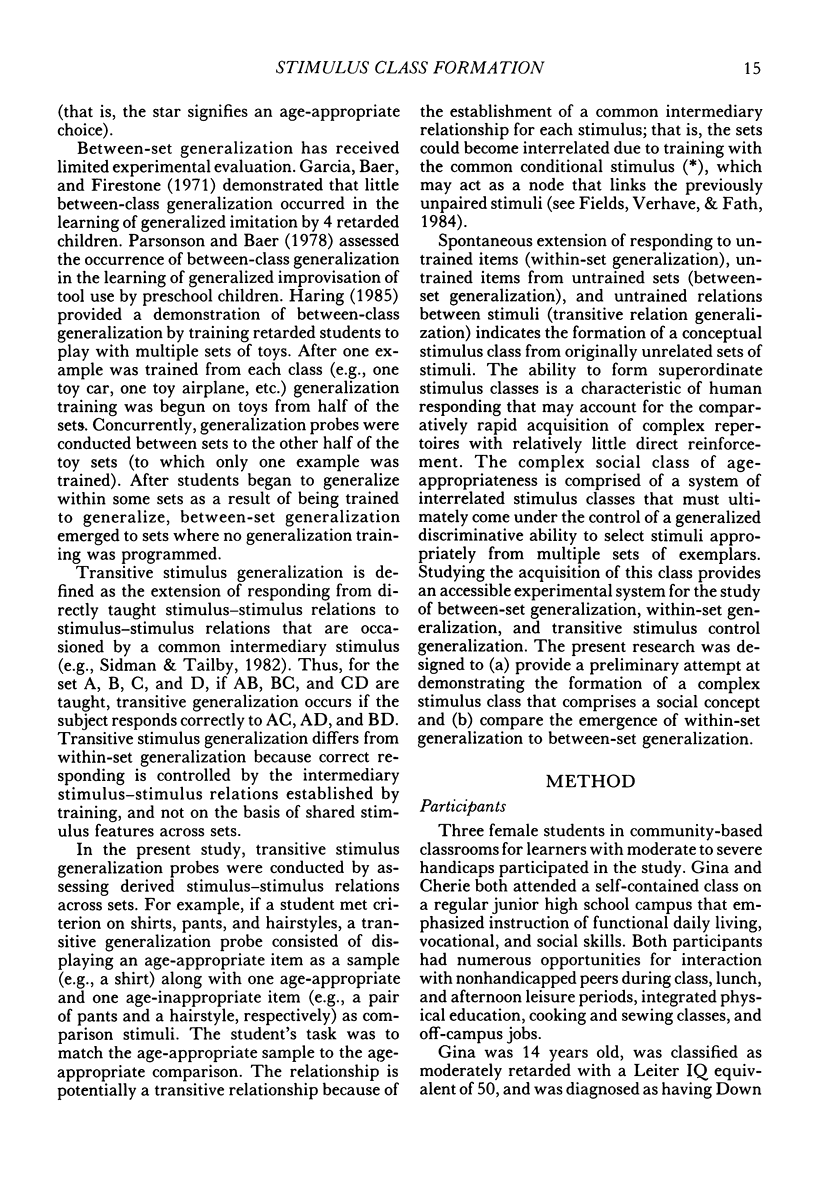
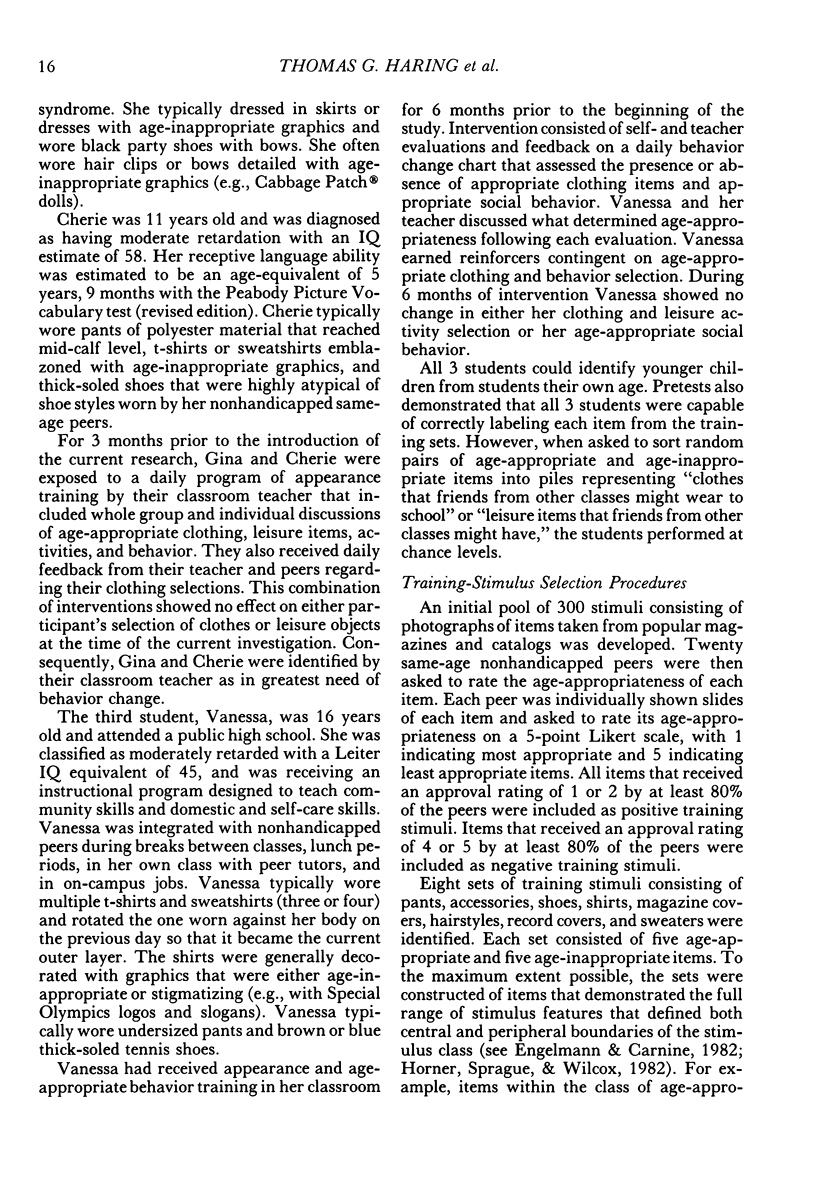
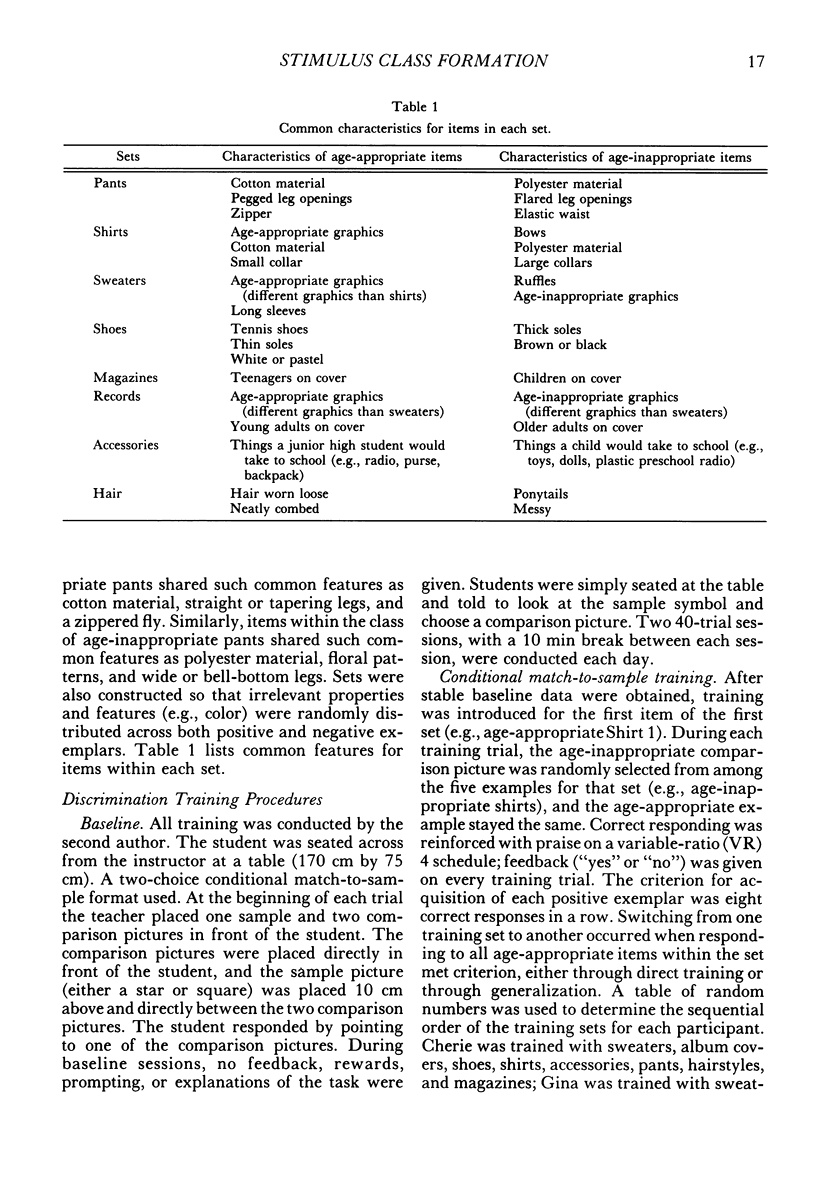
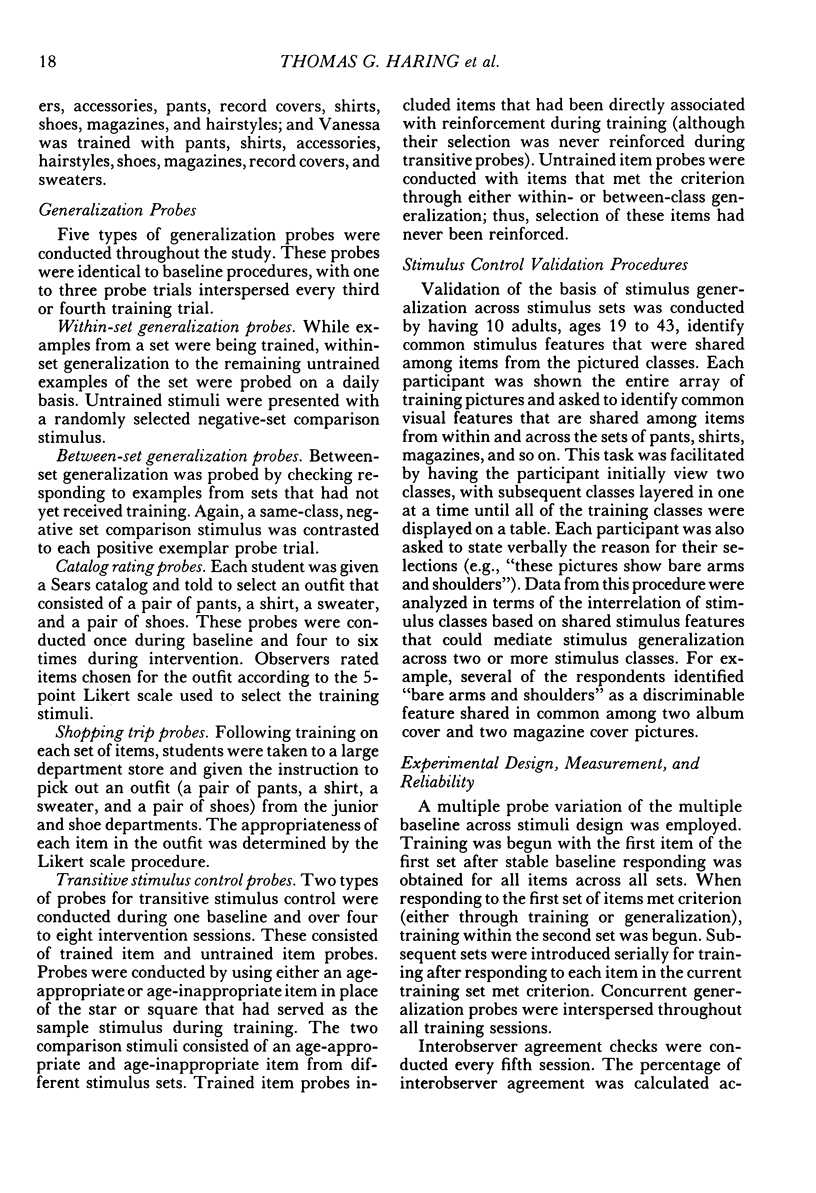
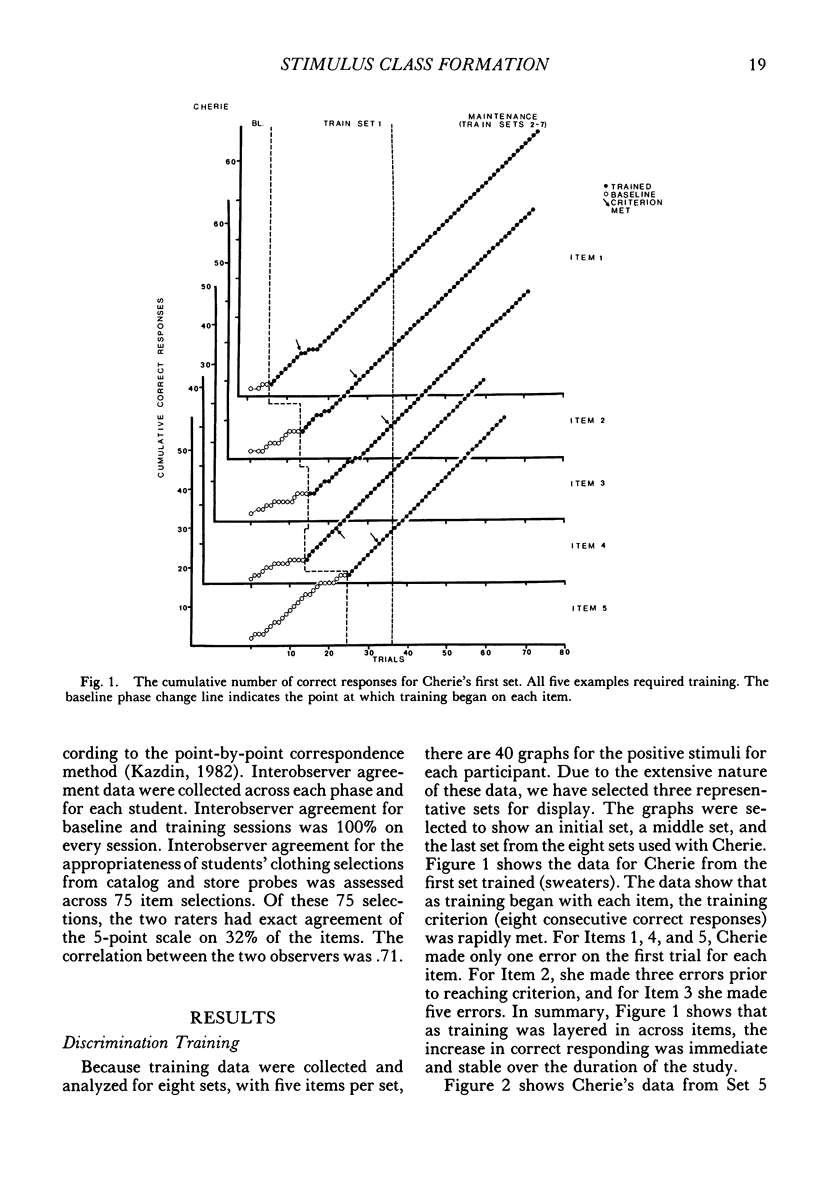
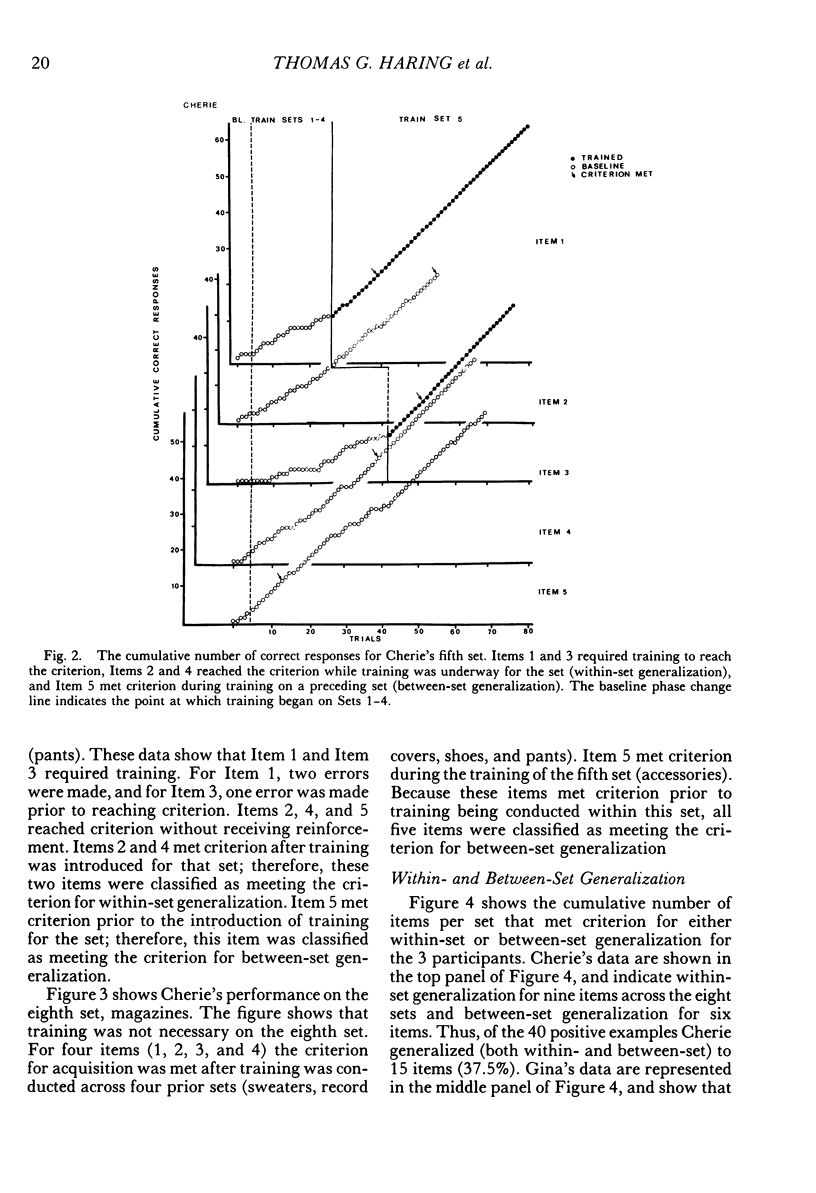
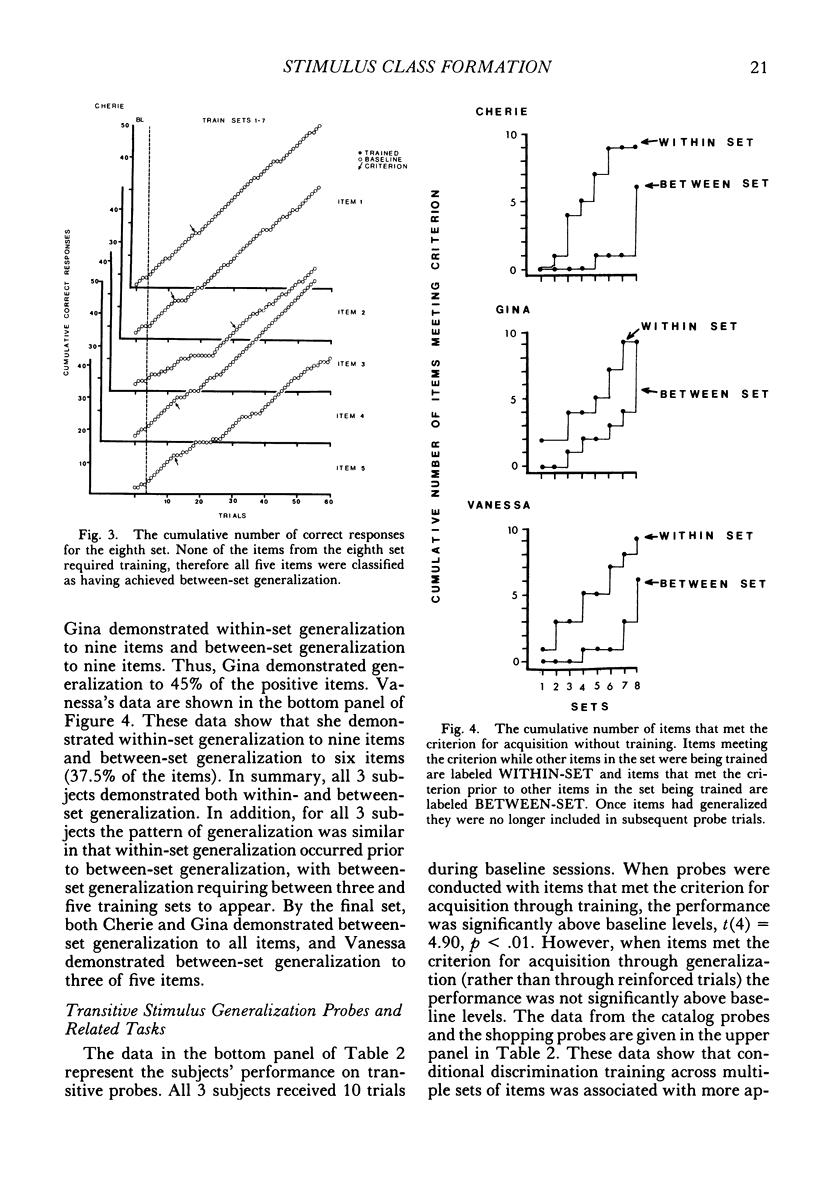
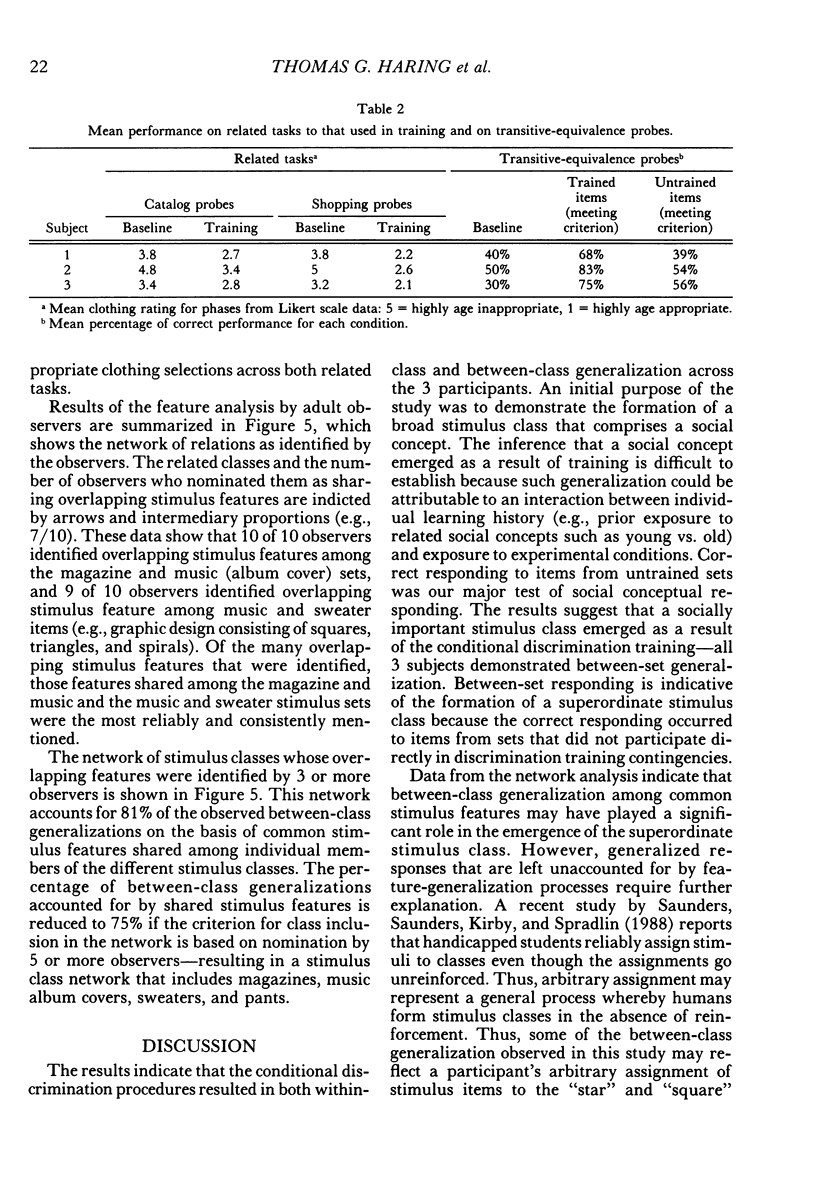
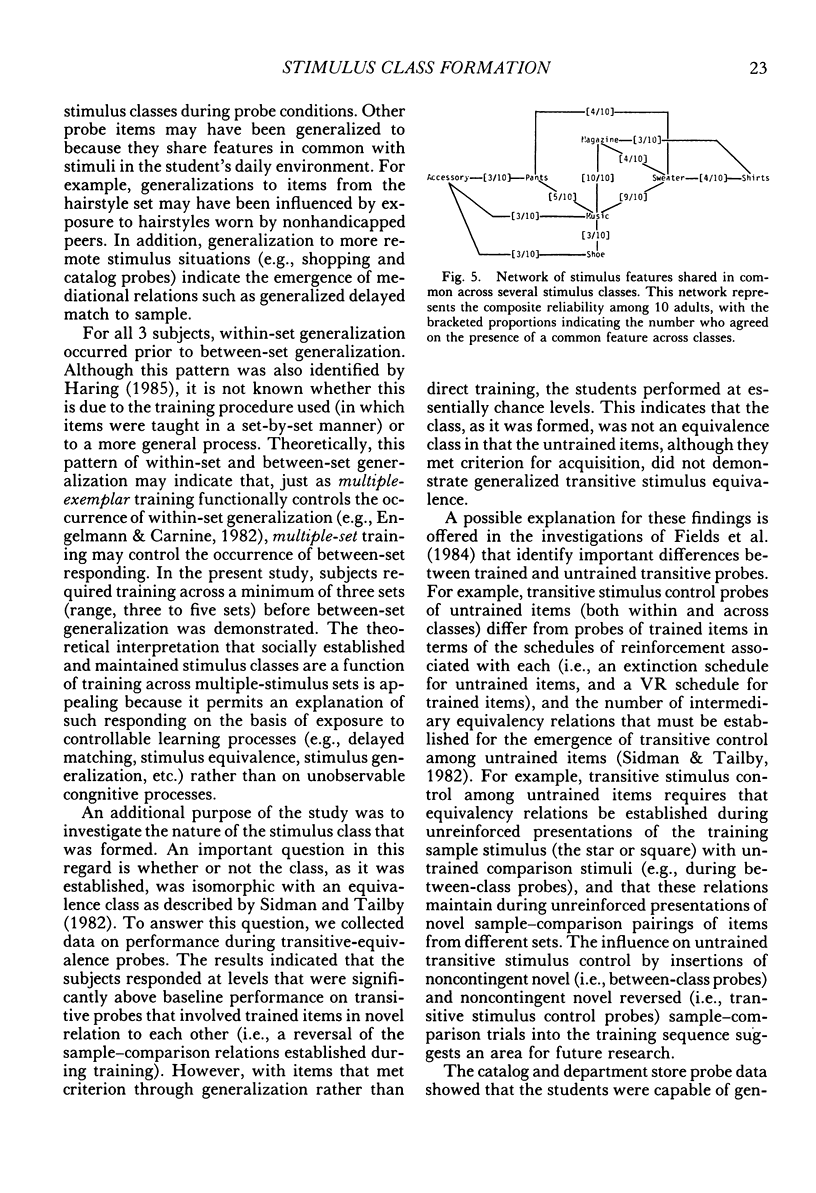
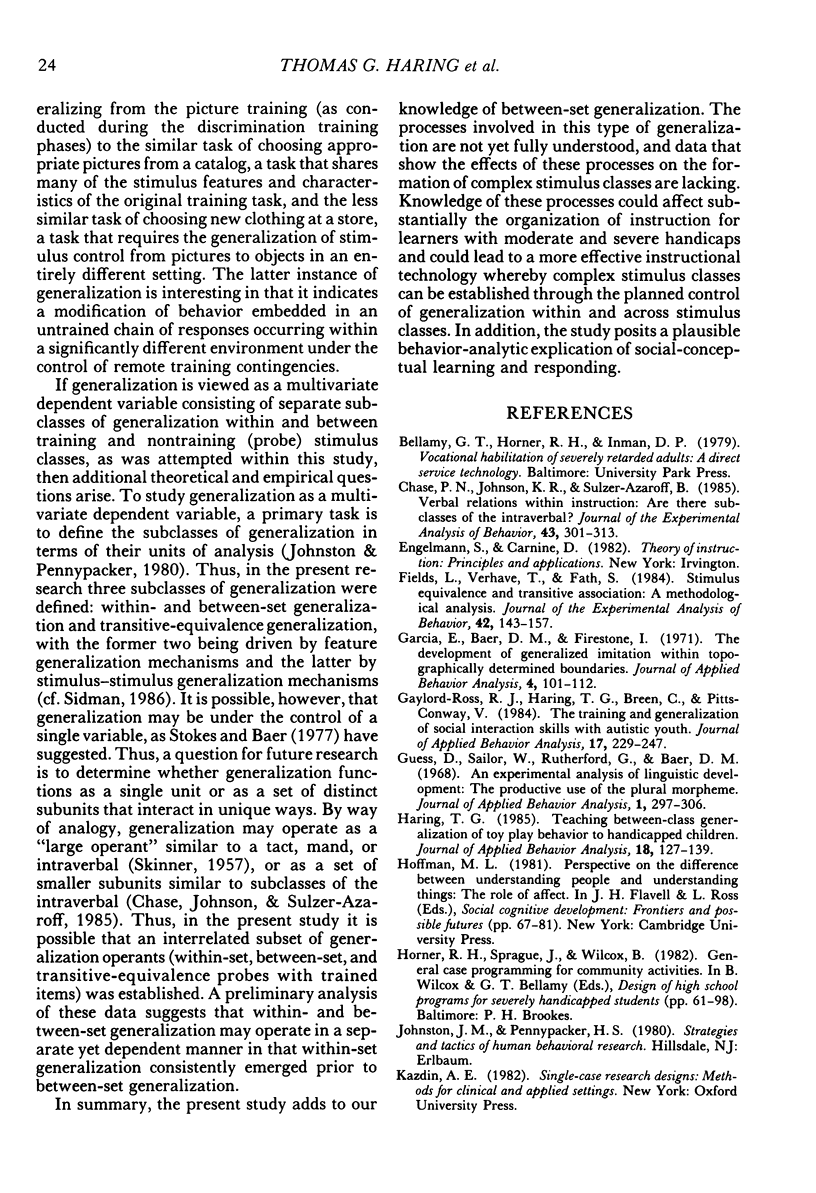
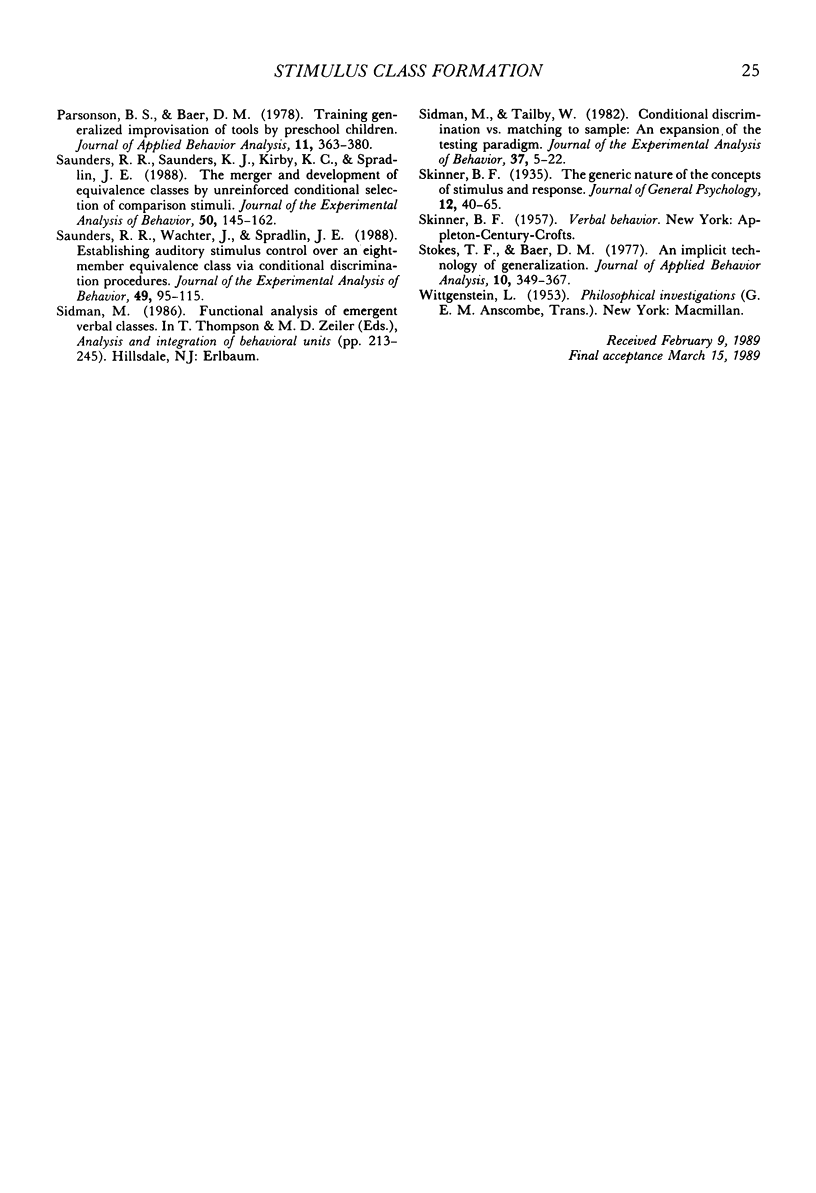
Selected References
These references are in PubMed. This may not be the complete list of references from this article.
- Chase P. N., Johnson K. R., Sulzer-Azaroff B. Verbal relations within instruction: Are there subclasses of the intraverbal? J Exp Anal Behav. 1985 May;43(3):301–313. doi: 10.1901/jeab.1985.43-301. [DOI] [PMC free article] [PubMed] [Google Scholar]
- Fields L., Verhave T., Fath S. Stimulus equivalence and transitive associations: A methodological analysis. J Exp Anal Behav. 1984 Jul;42(1):143–157. doi: 10.1901/jeab.1984.42-143. [DOI] [PMC free article] [PubMed] [Google Scholar]
- Garcia E., Baer D. M., Firestone I. The development of generalized imitation within topographically determined boundaries. J Appl Behav Anal. 1971 Summer;4(2):101–112. doi: 10.1901/jaba.1971.4-101. [DOI] [PMC free article] [PubMed] [Google Scholar]
- Gaylord-Ross R. J., Haring T. G., Breen C., Pitts-Conway V. The training and generalization of social interaction skills with autistic youth. J Appl Behav Anal. 1984 Summer;17(2):229–247. doi: 10.1901/jaba.1984.17-229. [DOI] [PMC free article] [PubMed] [Google Scholar]
- Guess D., Sailor W., Rutherford G., Baer D. M. An experimental analysis of linguistic development: the productive use of the plural morpheme. J Appl Behav Anal. 1968 Winter;1(4):297–306. doi: 10.1901/jaba.1968.1-297. [DOI] [PMC free article] [PubMed] [Google Scholar]
- Haring T. G. Teaching between-class generalization of toy play behavior to handicapped children. J Appl Behav Anal. 1985 Summer;18(2):127–139. doi: 10.1901/jaba.1985.18-127. [DOI] [PMC free article] [PubMed] [Google Scholar]
- Parsonson B. S., Baer D. M. Training generalized improvisation of tools by preschool children. J Appl Behav Anal. 1978 Fall;11(3):363–380. doi: 10.1901/jaba.1978.11-363. [DOI] [PMC free article] [PubMed] [Google Scholar]
- Saunders R. R., Saunders K. J., Kirby K. C., Spradlin J. E. The merger and development of equivalence classes by unreinforced conditional selection of comparison stimuli. J Exp Anal Behav. 1988 Sep;50(2):145–162. doi: 10.1901/jeab.1988.50-145. [DOI] [PMC free article] [PubMed] [Google Scholar]
- Saunders R. R., Wachter J., Spradlin J. E. Establishing auditory stimulus control over an eight-member equivalence class via conditional discrimination procedures. J Exp Anal Behav. 1988 Jan;49(1):95–115. doi: 10.1901/jeab.1988.49-95. [DOI] [PMC free article] [PubMed] [Google Scholar]
- Sidman M., Tailby W. Conditional discrimination vs. matching to sample: an expansion of the testing paradigm. J Exp Anal Behav. 1982 Jan;37(1):5–22. doi: 10.1901/jeab.1982.37-5. [DOI] [PMC free article] [PubMed] [Google Scholar]
- Stokes T. F., Baer D. M. An implicit technology of generalization. J Appl Behav Anal. 1977 Summer;10(2):349–367. doi: 10.1901/jaba.1977.10-349. [DOI] [PMC free article] [PubMed] [Google Scholar]


